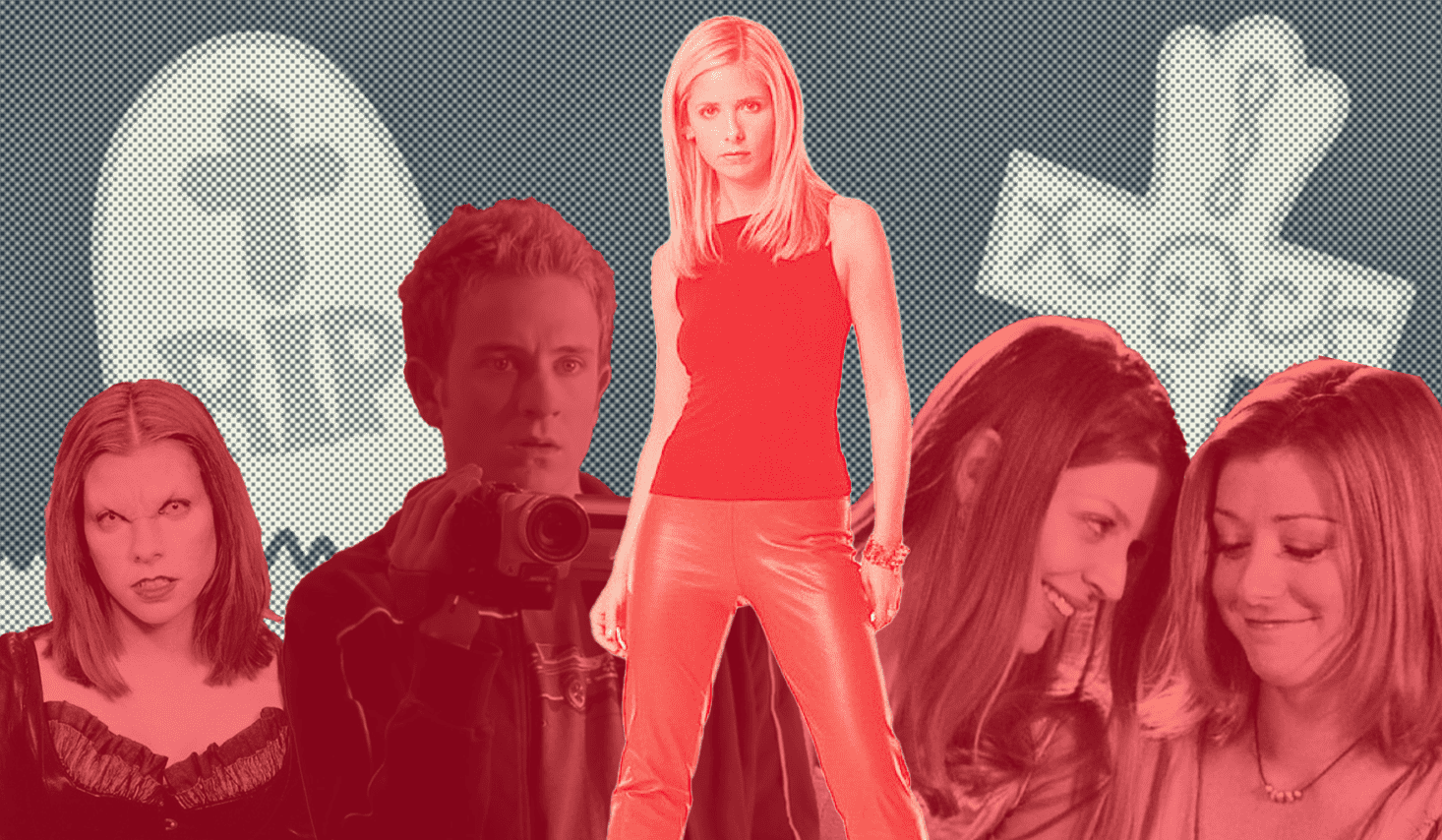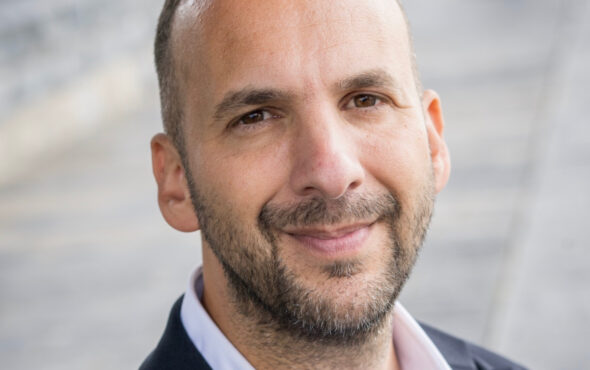
As Buffy the Vampire Slayer, a teenage girl bestowed with supernatural abilities to defeat vampires, demons and the forces of darkness (as well as the patriarchy), Sarah Michelle Gellar’s titular heroine changed the course of television.
Created by [redacted, for… reasons], the fantasy drama received universal critical acclaim during its seven-season run, with many individual episodes hailed as some of the finest in history: ‘Hush,’ still spine-chillingly spooky to this day; ‘Once More, with Feeling,’ arguably the best musical to ever air on the small-screen; and ‘The Body’, which delivers one of the most realistic depictions of death and loss ever portrayed. (‘Beer Bad’ exists, too.)
Credited with influencing other series in the same genre, such as Charmed, Doctor Who and Lost, Buffy was additionally lauded for its trailblazing queer representation. Buffy‘s resident witches Willow Rosenberg (Alyson Hannigan) and Tara Mackay (Amber Benson) memorably made history as the first-long term lesbian relationship on television, and have continued to serve as inspiration for writers and showrunners.
This week marks the 27th anniversary of Buffy the Vampire Slayer’s premiere on The WB, where Buffy made her Sunnydale debut and Darla subverted the damsel-in-distress trope by sinking her fangs into a mischievous hunk. To celebrate Buffy’s enduring feminist and queer legacy, we’re reflecting on the series’ gayest and campest moments, from Buffy ‘coming out’ to her mum to the musical stylings of Sweet. Of course, expect us to honour Andrew Wells – the future recipient of the Academy Award for Best Documentary.
2×22 – ‘Becoming’
Plot: Buffy teams up with her arch-nemesis Spike to take down Angelus and Drusilla before they unleash the demon Acathla, who aims to “swallow the world” into hell.
Why is it queer? Buffy is forced to reveal that she’s the slayer to her mother, which she… doesn’t take well. Joyce, confused about Buffy’s calling to thwart vampires, demons and swamp monsters (what is there to be confused about?), responds like a parent who refuses to believe their child is queer. She asks questions such as “Honey, are you sure you’re a slayer?”, “Have you tried not being a slayer?”, “It’s because you didn’t have a strong father figure, isn’t it?” Buffy is then kicked out of her home. Although she doesn’t identity as queer (on the show, comic book is a different story), Buffy became a champion for LGBTQIA+ youth who also felt ostracised because of their identity.
3×16 – ‘Doppelgangland’
Plot: A horny, leathery vampire version of Willow is summoned from an alternate dimension.
Why is it queer? ‘Doppelgangland’ foreshadows Willow’s coming out journey in the fourth season with her undeniably queer and evil doppelgänger, who comes on to Willow at every available opportunity. Good Willow (obviously) finds it disturbing and questions her: “Would that mean we have to snuggle?” It’s worth mentioning that Vampire Willow wore a lot of black and red leather. We know this was the 90s, but c’mon, very gay!
4×19 – ‘New Moon Rising’
Plot: Oz returns to Sunnydale after honing his werewolf instincts, but loses control when he finds out about Willow and Tara’s relationship.
Why is it queer? After their romance was alluded to all season, Willow finally comes out to Buffy – and the audience – revealing that her feelings for Tara have transcended friendship. Although her fellow Scooby Gang members are taken aback by her coming out, they accept her wholeheartedly and the couple’s queerness is never presented as an issue going forward. At the end of the episode, Tara tells Willow that she should be with the person she loves (assuming she wants to be with Oz), with Willow replying, “I am.” At the risk of sounding soppy, it’s one of the most beautiful moments in the series. Crying as I type this, maybe.
5×06 – ‘Family’
Plot: Tara’s family visit Sunnydale and threaten to take her home due to her “demonic” blood.
Why is it queer? Tara’s family threatening to take her away to “fix” her demonic side (even though there was absolutely nothing wrong with her), screams metaphor for gay conversion ‘therapy’. Buffy and the rest of the Scoobies stand up to her conservative relatives (including a pre-Oscar-nominee Amy Adams!) and make it clear they will fight to defend her; declaring that while the Maclays may be her blood kin, her friends are her real family – her chosen family. Buffy is such an ally – “mother” behaviour, really.
6×07 – ‘Once More, with Feeling’
Plot: A dancing demon compels Sunnydale to randomly break into song to express hidden truths.
Why is it queer? ‘Once More, with Feeling’ is not only the queerest and campest episode of Buffy the Vampire Slayer, but it’s one of the queerest and campest episodes in television history. It’s a musical, so there’s that. There’s also a dancing demon called Sweet, singing vampires and an erotic scene that shows Willow (off-screen) performing cunnilingus on Tara as she sings, “You make me complete, you make me com-,” before the scene cuts out. Camp! Watch this episode now. (The Mustard Man is also an icon.)
6×20 – ‘Villains’
Plot: After Tara is killed by Warren, Willow embraces her dinner Dark Phoenix.
Why is it queer? After several episodes of quitting magic – essentially becoming ‘sober’ – Willow relapses, becomes a master of the dark arts and embarks on a murderous rampage to seek revenge on Tara’s killer. She tears through Sunnydale and ultimately kills Warren, a vile scumbag bitch, in a very non-Buffy, torture porn manner: by flaying him alive. Here’s a beautiful gif of the moment, if you want. To deal with her loss, Willow eventually becomes the Big Bad of season six, battles Buffy in an epic martial arts smackdown and tries to decimate all life on Earth. It was rare to see such positive queer representation during this era of television, let alone a queer female witch becoming the modern iteration of Dark Phoenix because her lover, also a queer female, dies. Ground – say it with us – breaking.
7×13 – ‘The Killer In Me’
Plot: After sharing a kiss with Kennedy, Willow transforms into Warren.
Why is it queer? This episode saw the beginning of Willow and Kennedy’s relationship, the second major queer romance of the series. After kissing the self-proclaimed leader of the potential slayers, Willow morphs into Warren, Tara’s killer, as a physical manifestation of her guilt and grief. For anyone who’s ever lost someone close, this episode hits hard.
7×16 – ‘Storyteller’
Plot: Gay icon Andrew shoots a hilarious video documentary called Buffy, Slayer of the Vampyrs.
Why is it queer? Andrew is the most flamboyant character in Buffy the Vampire Slayer – including Sweet! – and the whole episode revolves around him with a video camera. [Redacted] really dropped the ball when he failed to give Tom Lenk his own mockumentary-style spin-off series, didn’t he?
7×20 – ‘Touched’
Plot: Spike comforts Buffy after she’s kicked out of the house, while Faith and the potential slayers interrogate a Harbringer.
Why is it queer? Willow and Kennedy have sex, making history in the process as the first ever lesbian sex scene broadcast on national television. It’s a shame it couldn’t be with Tara, because – no shade to Iyari Limon – Kennedy was an incredibly irritating individual. But it can’t be denied that this episode, and their relationship, was another landmark moment for queer representation.
All seven seasons of Buffy the Vampire Slayer are now available to stream in the UK on Disney Plus.



